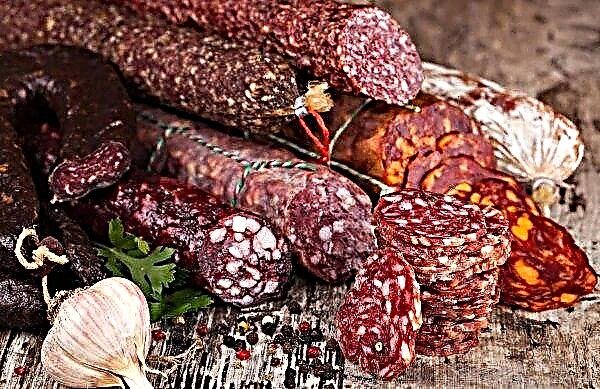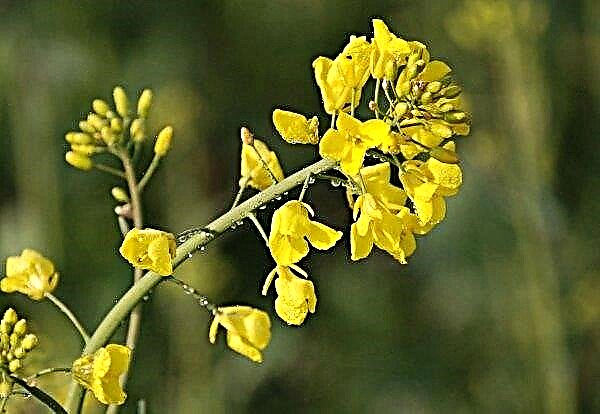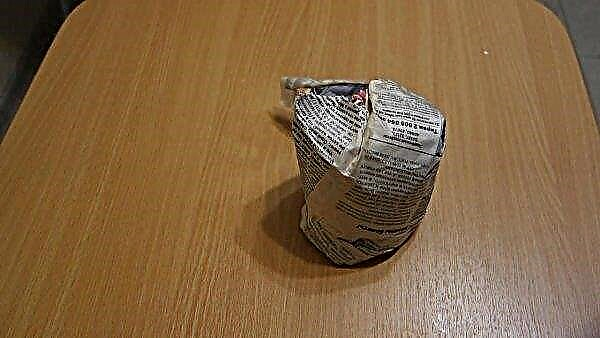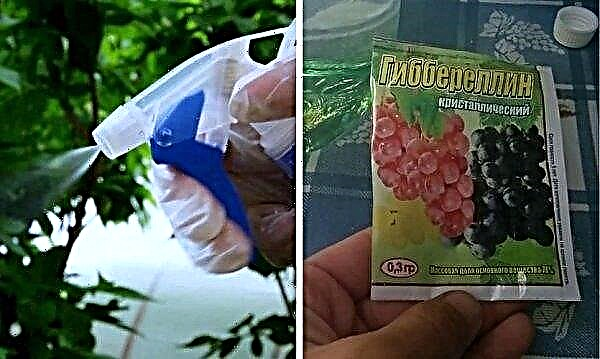Ficus Benjamin is an unpretentious and fast-growing plant with natural branching, easily grows foliage. It lends itself well to molding, so you can get interesting shapes, and do it in a short time. Find out how to cut Benjamin's ficus, what shape of the crown you can give it, what to do after pruning, and what problems you sometimes encounter.
Why and when can I cut Benjamin's ficus
Pruning for Benjamin's ficus can be sanitary, rejuvenating, and shaping. The first two positively affect the state of the plant itself, and the latter gives it a high decorative effect.
Important! It is extremely undesirable to carry out trimming manipulations (except for sanitary) in the autumn-winter period. This weakens the ficus, and it can begin to develop one-sidedly.
The optimal time for pruning is the beginning of spring, when the dormant period ends, and the plant begins to actively develop.
Basic pruning rules
In order to cut Benjamin's ficus, you will need a pruner or knife, crushed coal, napkins and an antiseptic (alcohol or potassium permanganate solution).
When cropping, you should follow these rules:
- Treat secateurs with antiseptics.
- Sharpen the tool well.
- Cut off excess over the kidney.
- Cropping is done from the bottom up.
- Thick branches cut obliquely.
- On the trimmed shoot leave 5 kidneys.
- Wipe the cut and grind with crushed charcoal.
How to Cut Benjamin's Ficus at Home
There are two types of mandatory trimming for Benjamin's ficus - sanitary and anti-aging.
Sanitary pruning
This type of trimming can be done at different times. In this case, damaged, diseased, old and dead branches of the plant are removed. They not only look unaesthetic, but can also serve as a source of fungal diseases. It is necessary to cut to a healthy place. If the shoot to be removed goes underground, then the cut is done at the base.
Weak shoots and twigs growing inside the plant are also removed, as they unnecessarily thicken the ficus.
Anti-aging pruning
This pruning is suitable for Benjamin's ficus, which has lost foliage from old age or from inappropriate conditions of maintenance (dry air and heat, drying out of the soil). With it, they get rid of old branches or branches that have lost foliage.
They are cut close to the base, but at the same time leave at least two kidneys. After such pruning, the plant must be fed. Cropped shoots can be used to grow new plants.
Types of crowns and step-by-step instructions for forming
With the help of forming trimming and some molding techniques you can achieve interesting shapes. There are different types of crowns, and for the formation of each of them has its own set of actions.
It is best to start forming on young copies, but first you need to decide what you will form.
Bush
Ficus Benjamin grows a tree, but if desired, they can be made to bush. For molding with a bush, you should choose a young plant up to 7 cm tall.
The following procedures should be carried out with him:
- Identify the main shoot and cut off the top of it.
- After reaching the ficus 12 cm, pinch all the side shoots.
- Remove all shoots growing inward.
- When new shoots appear, do the same. You should also remove branches that are too thick bush and interfere with the penetration of light.
 To form a uniformly developed bush, the plant must be well lit from all sides or unfold to the light source in different directions.
To form a uniformly developed bush, the plant must be well lit from all sides or unfold to the light source in different directions.Stamp
Punched forms look very aesthetically pleasing and are popular.
To obtain the stem, you must perform the following procedure:
- Choose a strong, vertically growing shoot for molding.
- When it grows to the desired length, cut off 5-10 cm of the top. At the top, leave only 5 shoots, and cut off the rest.
- Remove each lower shoot close to the base. This procedure is performed continuously.
- As the branches grow, pinch them again, like the main shoot.
- Shorten the twigs to the same length to form a spherical crown.
Important! To form an unusual and beautiful trunk of ficus Benjamin, several cuttings are planted next to each other and bound with a plait or pigtail. The barrel can be twisted into a spiral around the support, and then, when it gets stronger, remove the support.
If you want to have a stem no higher than half a meter, then the trunk should be exposed no more than 20 cm. A trunk of 1 meter high will form a trunk of 25–35 cm. At first, an immature trunk is tied up.
Bonsai tree
Growing bonsai from ficus Benjamin is a separate technology in which its growth is regulated by a flat root system. To do this, use wide flat containers such as a bowl. A young stalk is planted in such a container with poor nutrient soil.
This technique limits the growth of the plant. Ficus will need to cut the roots several times. Most suitable for bonsai are varieties "Natasha", "Nicole", "Nina", "Viandi", "Baroque".
You should also perform the following actions:
- First you need to decide on the style of bonsai (straight, dual trunk, oblique, group or others).
- After the appearance of 5-10 sheets, carry out the first pruning, leaving 2-5 buds at the top.
- Further pruning is carried out according to the plan of tree formation. Roots are cut periodically and growth points are pinched.
- If it is necessary to bend the ficus, for example, for the “tree in the wind” style, then thick wire is used for this.
You knoware you The name of the art of growing a tree in miniature "bonsai" comes from the Chinese "penzai", which translates as "grown in a tray." It became popular in Japan, where it was imported by Buddhist monks, and in 1914, a bonsai exhibition was first held in Tokyo.
After each transplant, Benjamin's ficus can be raised a little, exposing the roots. This species is capable of forming caudex, that is, a thickening of the barrel in the form of a bottle. After these manipulations, a beautiful bonsai is obtained after 3 years.
Longline stamb
It is a crown divided into parts. Its molding occurs in tiers, between which a smooth trunk is left. The process itself is carried out as the plant grows. First, the ficus is cut so as to create a simple standard tree with a spherical crown.
Then shoots are cut so that the central shoot grows. As the branches grow and grow, they form a smooth trunk and a new tier. This is a fairly lengthy process.
To reduce the time spent on such a process, experts recommend planting two cuttings at once, fixing them to each other with wire. As they grow, the cuttings grow together in one trunk, and in the upper part they separate. Each of these plants is formed as a regular bole, but each crown is located at different levels.
If you plant nearby cuttings with unequal color of leaves, then you can form an interesting tree with multi-colored levels.
Longline shtamb is sometimes grown from one shank. It grows upwards, in the form of a long, tall stem. Such a crown is divided into 3 tiers. The part above and below represent the shtamb, and from the third part, which is in the middle, cut off all the branches in the form of a bare trunk. The top must be pinched. Each tier is formed as an ordinary standard.
Sculpture
To form Benjamin's ficus in the form of various figures is the most difficult, and this is a lengthy process. Experienced gardeners can create a real masterpiece in the form of various animals. An ordinary lover can try to make a crown in the form of geometric shapes - a cone, ball or cylinder.
It will take more than one year. With this formation, shoots are trimmed in a certain sequence so as to give them the desired shape. As a rule, branches directed inside the crown are cut off and leaves growing outside are left. Thus, the outer part of the crown grows, and it is easier to give the desired shape.
Did you know? On about. Sri Lanka in the territory of the local Royal Botanical Garden grows 150-year-old ficus Benjamin, which has grown to 1,500 square meters. m. He was nicknamed the "turtle", because his crown is very similar in shape to this reptile.
Features after trimming
When the ficus is circumcised, it should provide proper care.
To do this, follow these recommendations:
- after pruning, the branches become smaller, which means that watering should be reduced, since the need for water in the plant is reduced;
- Bonsai requires daily hydration, due to the rapid drying of the soil in small dishes;
- so that young shoots begin to appear and grow more actively, any growth regulator should be used, for example, the Epin preparation;
- as the ficus grows, you need to pinch the shoots to maintain the shape of the crown;
- shuffling the ficus should be avoided, as he does not like moving.
 Such care will help consolidate the result after the crown is formed.
Such care will help consolidate the result after the crown is formed.Important! The flower pot should be protected from direct sunlight, as they can cause burns on young shoots.
What problems may arise
The following problems may occur during the crown formation procedure:
- Due to an untreated trimmer (knife) or an untreated cut, infection can be introduced.
- Do not make a crown too thick, as the branches will obscure each other, and the leaves will begin to die.
- It is not necessary to fix the ficus to direct growth immediately after transplantation, you need to wait 3 weeks to let the plant grow stronger.
- If a thin wire is used, a piece of fabric is necessarily laid under it.
- It is better to use softer materials for molding. For example, tie the branches with a rope or twine to a support.
- If the crown did not develop as you intended, then an adult plant is recommended to be vaccinated.
- With one-sided shoot growth, you can resort to kerbovka - a special incision of the bark over the shoot you need to stimulate its growth.
- If the branch grows in the wrong direction, then weights and guides can be used to give the desired direction.
By taking the time to properly trim and shape Benjamin's ficus, you can grow very interesting and decorative shapes.












